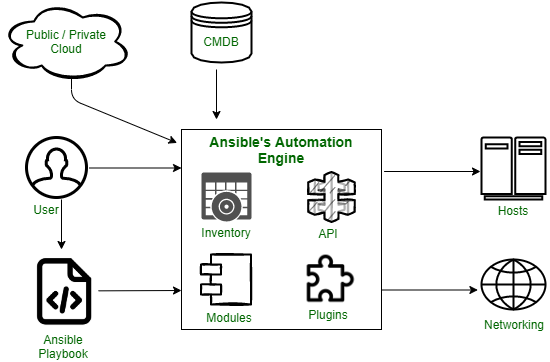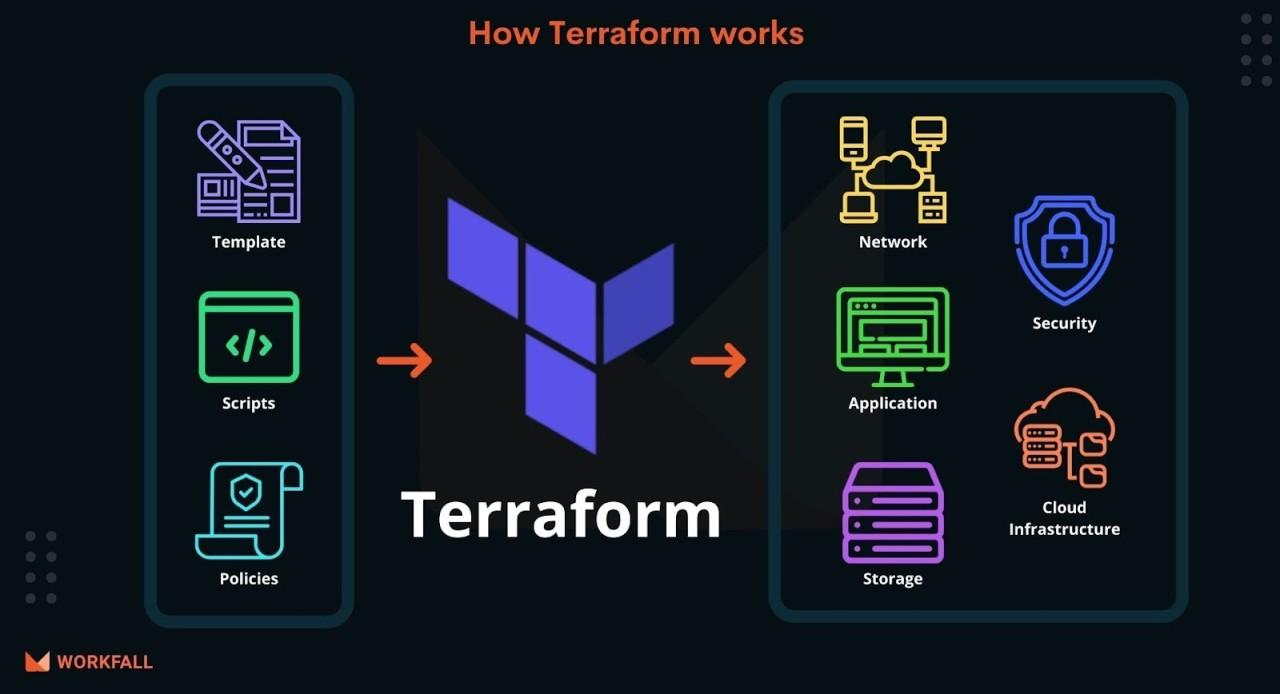Top IT Infrastructure Automation Tools in 2024

Audio : Listen to This Blog.
In today’s rapidly evolving tech landscape, the need for efficient and reliable IT infrastructure has never been more critical. With organizations striving to keep up with the demands of digital transformation, cloud infrastructure optimization tools and infrastructure as code (IaC) tools have become essential components of modern IT management. In this blog, I’ll delve into the top IT infrastructure automation tools in 2024, exploring their features, benefits, and why they stand out in the crowded market.
The Importance of IT Infrastructure Automation

Before diving into the tools, it’s essential to understand why IT infrastructure automation is pivotal. Automation reduces the manual effort required to manage complex IT environments, minimizes human error, and accelerates deployment times. It also enables IT teams to focus on strategic tasks that drive business growth rather than routine maintenance. Additionally, automation improves operational efficiency by seamlessly automating and orchestrating processes.
1. Ansible: The Open-Source Powerhouse

Source: GfG
Ansible, created by Red Hat, continues to dominate the automation landscape due to its straightforward and powerful design. As one of the leading configuration management tools, it uses an agentless architecture, meaning it doesn’t require software to be installed on the nodes it manages, significantly reducing overhead and simplifying deployment.
Human-readable YAML files for defining automation tasks make it incredibly accessible, even to those new to the field. Additionally, Ansible’s versatility allows it to integrate seamlessly with a wide range of systems and platforms, making it an indispensable tool for IT professionals looking to automate complex environments efficiently.
Key Features
- Agentless Architecture: Ansible operates without requiring agents on managed nodes, reducing overhead and simplifying management.
- Human-Readable YAML Language: Playbooks written in YAML are easy to read and write, making them accessible even for those new to automation.
- Extensible Modules: Ansible can automate tasks across different systems and platforms with a vast library of modules.
Why Ansible?
Ansible’s easy learning curve and powerful capabilities make it ideal for small and large enterprises, empowering teams to quickly adopt and implement automation solutions. Its intuitive design allows users to get started with minimal training, while its extensive module library supports various tasks and integrations. Whether you’re managing a handful of servers or thousands across multiple environments, Ansible’s inherent scalability ensures that your automation processes remain efficient and reliable.
2. Puppet: The Configuration Management Veteran
Puppet has long been a staple in configuration management and automation, renowned for its ability to manage complex infrastructure with precision and reliability. Its declarative language allows users to define the desired state of their systems, ensuring consistent configurations across diverse environments, including the configuration of infrastructure components.
The Resource Abstraction Layer simplifies management by abstracting the underlying details of your infrastructure, offering a cohesive interface regardless of the specific technologies in use. Moreover, Puppet’s robust feature set includes automated compliance checks and drift correction, which are crucial for maintaining security and adherence to regulatory standards.
Key Features
- Declarative Language: Puppet uses declarative language, allowing you to define your infrastructure’s desired state succinctly.
- Resource Abstraction Layer: This feature abstracts the underlying details of your infrastructure, providing a consistent management interface.
- Strong Community Support: Puppet boasts a substantial community, offering extensive documentation, modules, and support.
Why Puppet?
Due to its strong governance capabilities, Puppet is particularly well-suited for environments requiring strict compliance and configuration standards. It excels at enforcing desired states across diverse infrastructures, ensuring systems remain consistent and adhere to predefined configurations.
This capability is vital for maintaining reliability and minimizing drift in complex environments. Additionally, Puppet’s automated compliance checks help organizations easily meet regulatory requirements and maintain security best practices.
3. Chef: Automating Complex Systems
Chef emphasizes treating infrastructure as code (IaC), enabling IT teams to manage and configure their environments using the same practices they use for software development. By leveraging infrastructure code, Chef allows for powerful and flexible automation, making complex tasks more manageable and repeatable. This approach promotes version control, collaboration, and continuous integration, ensuring that infrastructure changes are tracked and vetted like application code.
Furthermore, Chef’s suite of tools, including Chef Infra and Chef Habitat, extends this philosophy to infrastructure and applications, providing a comprehensive framework for end-to-end automation. This methodology enhances efficiency and fosters a DevOps culture, bridging the gap between development and operations teams.
Key Features
- Ruby-Based DSL: Chef recipes are written in Ruby, providing powerful scripting capabilities for complex configurations.
- Chef Infra: This tool automates infrastructure management at scale, from servers to cloud resources.
- Chef Habitat: Focuses on application automation, ensuring applications run consistently across various environments.
Why Chef?
Chef’s versatility and powerful scripting capabilities make it ideal for managing complex and dynamic IT environments, where flexibility and precision are paramount. Its comprehensive suite of tools, including Chef Infra for infrastructure management and Chef Habitat for application automation, provides a holistic approach to automation.
This enables organizations to handle everything from server provisioning to application deployment with a consistent, code-driven methodology. By leveraging Chef’s powerful scripting and extensive toolset, IT teams can ensure robust, scalable, and efficient operations across their entire technology stack.
4. Terraform: The Infrastructure as Code Leader

Source: LinkedIn
Terraform, developed by HashiCorp, is a premier tool for provisioning and managing infrastructure as code (IaC), offering unparalleled flexibility and control. Its declarative approach allows users to define the desired state of their infrastructure resources in simple configuration files, ensuring easy readability and repeatability. Terraform’s ability to support multiple cloud providers and services through a single, unified interface makes it indispensable for organizations operating in hybrid or multi-cloud environments.
This comprehensive coverage enables seamless orchestration of complex infrastructures across various platforms, enhancing productivity and reducing the risk of configuration drift. Additionally, Terraform’s extensive module library and active community support streamline the automation process, making it easier to implement best practices and achieve consistent, reliable results.
Key Features
- Declarative Configuration Files: Terraform configurations describe the desired state of your infrastructure, ensuring consistent deployments.
- State Management: Terraform tracks the state of your infrastructure, allowing for incremental updates and rollbacks.
- Provider Ecosystem: With providers for virtually every major cloud and service, Terraform integrates seamlessly into diverse environments.
Why Terraform?
Terraform’s ability to manage infrastructure across multiple clouds using a single configuration language sets it apart from other IaC tools, providing a unified approach to diverse environments. This multi-cloud capability simplifies complex deployments and streamlines management processes, allowing teams to focus on innovation rather than integration challenges.
Terraform’s robust state management tracks the state of your resources, ensuring that infrastructure changes are applied consistently and predictably. This reduces the risk of configuration drift and enhances reliability, making Terraform an essential tool for modern infrastructure management.
5. SaltStack: The Versatile Automation Engine
SaltStack, now part of VMware, offers a highly flexible and scalable automation platform designed to meet the demands of modern IT environments through its infrastructure automation solutions. Renowned for its exceptional speed, SaltStack leverages a real-time event-driven architecture that allows for immediate reaction to changes and events within the infrastructure. This real-time capability ensures high responsiveness, enabling rapid configuration updates and swift issue resolution.
SaltStack’s modular design and extensive library of pre-built modules provide unparalleled customization and scalability, making it suitable for both small-scale deployments and enterprise-level operations. With its comprehensive automation features, SaltStack empowers organizations to achieve greater efficiency, consistency, and control over their IT landscapes.
Key Features
- Event-Driven Automation: SaltStack reacts to events in real time, enabling rapid responses to changes and incidents.
- Scalability: Designed to manage tens of thousands of nodes, SaltStack scales effortlessly.
- Multi-Master Architecture: Ensures high availability and fault tolerance, critical for large-scale deployments.
Why SaltStack?
SaltStack’s real-time capabilities and scalability make it perfect for dynamic environments where rapid response is crucial. Its event-driven model allows for proactive infrastructure management by enabling automatic reactions to system changes and events.
This ensures that configurations stay up-to-date and issues are addressed swiftly, reducing downtime and enhancing reliability. SaltStack’s scalable architecture supports both small and large deployments, making it a versatile solution for diverse IT needs.
6. Kubernetes: Orchestrating Containerized Workloads
Kubernetes has revolutionized how we deploy, manage, and scale containerized applications by providing a powerful orchestration platform that automates many of the tasks associated with running containers, positioning itself among the leading cloud infrastructure automation tools. While not a traditional IT infrastructure automation tool, its impact on infrastructure is profound, offering capabilities such as automated rollouts and rollbacks, self-healing, and horizontal scaling.
Source: Kubernetes.io
This abstraction layer simplifies complex deployments, enhances application reliability, and accelerates the development cycle, making Kubernetes an indispensable component in modern DevOps practices. The widespread adoption of Kubernetes underscores its transformative effect on both application and infrastructure management paradigms.
Key Features
- Container Orchestration: Automates containerized applications’ deployment, scaling, and management.
- Self-Healing: Automatically replaces failed containers and reschedules them, ensuring high availability.
- Declarative Configuration: Manages applications using declarative YAML files, promoting consistency and repeatability.
Why Kubernetes?
For organizations adopting microservices and containerization, Kubernetes is indispensable due to its robust orchestration capabilities. It ensures that complex applications composed of numerous microservices run smoothly and efficiently by managing container deployment, scaling, and operations automatically.
Kubernetes handles critical tasks such as load balancing, service discovery, and automated rollouts and rollbacks, which simplifies the management of distributed systems. This leads to improved application performance, reliability, and reduced operational overhead, making Kubernetes a cornerstone for modern application infrastructure.
CI/CD Tools: Automating the Software Delivery Pipeline

Continuous Integration and Continuous Deployment (CI/CD) tools, as essential devops tools, play a crucial role in automating software delivery, enabling development teams to achieve rapid and reliable releases. By automating the build, test, and deployment processes, CI/CD tools help to identify and fix issues early in the development cycle, significantly reducing the time between code changes and production deployment. This automation not only speeds up the release process but also enhances the quality and reliability of the software by ensuring that each code commit is thoroughly tested.
CI/CD practices foster a culture of continuous improvement and collaboration among development, operations, and QA teams, ultimately leading to more efficient workflows and higher-quality products. The consistent and repeatable nature of CI/CD pipelines ensures that software updates can be delivered quickly and safely, meeting the demands of fast-paced development environments.
1. Jenkins

Source: Medium
Jenkins is an open-source automation server that facilitates the building, deploying, and automating of software development processes, and integrates seamlessly with various version control systems like GitHub and SVN. With its extensive plugin ecosystem, Jenkins can integrate with numerous tools and technologies, making it highly adaptable to various development workflows. It supports continuous integration and continuous delivery (CI/CD) practices, enabling developers to automate repetitive tasks, reduce errors, and accelerate the release cycle.
By providing a central platform for managing and monitoring all stages of the software development lifecycle, Jenkins enhances productivity and ensures more consistent and reliable software delivery.
Key Features
Extensible via Plugins: Jenkins’ extensibility through its robust plugin ecosystem is one of its standout features, allowing it to fit nearly any requirement within software development and operations. Thousands of plugins are available, covering a wide array of functionalities—from integrating with various version control systems like Git, SVN, and Mercurial, to connecting with different build tools, testing frameworks, and deployment platforms.

This flexibility enables Jenkins to adapt to diverse project needs, making it a versatile tool for CI/CD pipelines. The vast selection of plugins also means that as new technologies and methodologies emerge, Jenkins can quickly accommodate them through community-contributed or custom-developed plugins.
Pipeline as Code: In Jenkins, pipelines are defined in code using the Groovy-based Domain Specific Language (DSL), which offers significant benefits for managing CI/CD processes. By treating pipelines as code, teams can version control their build and deployment workflows just like application code, ensuring traceability and reproducibility.
This approach promotes best practices such as code reviews, automated testing of pipeline scripts, and maintaining a single source of truth. It also simplifies complex workflows by allowing reusable, modular pipeline components, making it easier to manage and scale CI/CD processes across multiple projects and teams.
Wide Adoption: Jenkins boasts a large and active community, which significantly contributes to its extensive support and continuous improvement. This widespread adoption means that a wealth of resources, from tutorials and documentation to forums and user groups, is readily available to help users overcome any challenges they might face.
The community-driven nature of Jenkins ensures ongoing enhancements, regular updates, and security patches, keeping the tool relevant and robust. Additionally, the collective knowledge and experience of the community foster innovation and best practices, making Jenkins a reliable choice for organizations looking to implement or enhance their CI/CD pipelines.
2. GitLab CI/CD
Part of the GitLab platform, GitLab CI/CD integrates seamlessly with Git repositories and the Google Cloud Platform, providing a streamlined and cohesive automation experience. This integration allows developers to automate the entire software development lifecycle, from code commit to production deployment, directly from their Git repository. With built-in features for continuous integration, continuous delivery, and continuous deployment, GitLab CI/CD ensures that every code change is automatically tested and deployed, enhancing both the speed and reliability of software releases.
The unified platform simplifies the setup and management of CI/CD pipelines, reducing the complexity of toolchain integration and fostering a more efficient and collaborative development environment. Additionally, its powerful monitoring and reporting capabilities provide valuable insights into the performance and health of the development process, enabling continuous improvement.
Key Features
Integrated Platform: GitLab offers a fully integrated platform that combines source control, CI/CD, and monitoring within a single, unified interface, streamlining the entire development lifecycle. This holistic approach eliminates the need for disparate tools, reducing the complexity and overhead associated with managing multiple systems. Developers can commit code, trigger builds, run tests, and deploy applications all from within the same environment, fostering seamless collaboration and efficiency.
With built-in monitoring capabilities, teams can continuously track application performance and system health, allowing for proactive issue resolution and continuous improvement. This integration ensures that all aspects of the development process are tightly coupled, promoting better coordination and consistency across teams.
Auto DevOps: GitLab’s Auto DevOps feature significantly simplifies the setup and management of CI/CD pipelines by providing predefined templates and best practices out of the box. This feature automatically detects the programming language and framework of the project, generating suitable pipelines for building, testing, and deploying the application. By leveraging industry standards and best practices, Auto DevOps reduces the time and effort required to configure CI/CD workflows, enabling teams to focus more on coding and less on pipeline maintenance.

It also ensures that security scans, code quality checks, and performance monitoring are incorporated into the pipeline, promoting robust and resilient software releases. This ease of setup makes it accessible even to teams with limited experience in continuous integration and delivery.
Scalability: GitLab is designed to handle large-scale projects effortlessly, supporting parallel builds and distributed runners to maximize efficiency and performance. Its architecture allows for the distribution of CI/CD jobs across multiple machines, enabling concurrent execution and reducing build times significantly. This scalability ensures that even as the project grows in complexity and size, the CI/CD processes remain efficient and responsive.

GitLab runners can be deployed across various environments, including cloud, hybrid, and on-premises setups, providing flexibility and adaptability to different infrastructure needs. This capability to scale effectively helps organizations maintain high productivity levels and ensures timely delivery of features and updates, regardless of project size or team distribution.
Why CI/CD Tools?

Automating the software delivery pipeline with CI/CD tools reduces deployment times by streamlining and accelerating the build, test, and deployment processes. This automation minimizes human intervention, which not only speeds up releases but also significantly improves code quality by ensuring that every change is thoroughly tested before reaching production. By fostering a culture of continuous improvement, CI/CD tools empower teams to quickly iterate on their code, address issues rapidly, and implement new features more efficiently.
These tools are essential for modern DevOps practices, as they facilitate seamless collaboration between development and operations teams, enhance overall productivity, and ensure that software can be delivered reliably and consistently in fast-paced development environments.
Conclusion: Choosing the Right Tool for Your Needs

Selecting the right IT infrastructure automation tool depends on your organization’s specific requirements, existing environment, and future goals. Each tool offers unique strengths tailored to different needs, from simple agentless solutions to powerful scripting capabilities and multi-cloud management. Here’s a quick recap to help you decide:
Ansible
Best for those seeking a simple, agentless solution that operates efficiently without the need for additional software on client machines. Its gentle learning curve makes it accessible for teams new to infrastructure automation.
Puppet
Ideal for environments that require rigorous compliance and strict configuration enforcement. Puppet’s robust policy management ensures consistency and adherence to desired states across complex infrastructures.
Chef
Suitable for complex infrastructures that demand powerful scripting capabilities for configuration management. Chef’s use of Ruby-based recipes allows for highly customizable and flexible automation solutions.
Terraform
Perfect for managing multi-cloud environments with consistent Infrastructure as Code (IaC) practices. Terraform’s declarative configuration language enables seamless provisioning and management of resources across various cloud providers. Additionally, Terraform integrates with Google Cloud Deployment Manager to manage Google Cloud resources efficiently.
SaltStack
Great for real-time, event-driven automation and achieving massive scalability in large and dynamic environments. Its reactive framework allows for immediate response to infrastructure events, ensuring optimal performance and reliability.
Kubernetes
Essential for orchestrating containerized applications and managing microservices architectures. Kubernetes automates deployment, scaling, and operation of application containers across clusters of hosts.
CI/CD Tools (Jenkins, GitLab)
Crucial for automating the software delivery pipeline and adopting DevOps practices. These tools streamline the integration and deployment processes, enabling rapid, reliable releases and continuous improvement in development workflows.
Each tool has carved out a unique niche in the automation ecosystem, addressing different aspects of IT infrastructure management. By leveraging the strengths of these tools, you can transform your infrastructure into a self-sustaining, efficient, and highly responsive environment ready to meet the challenges of 2024 and beyond. What tool do you think would best suit your infrastructure needs?
